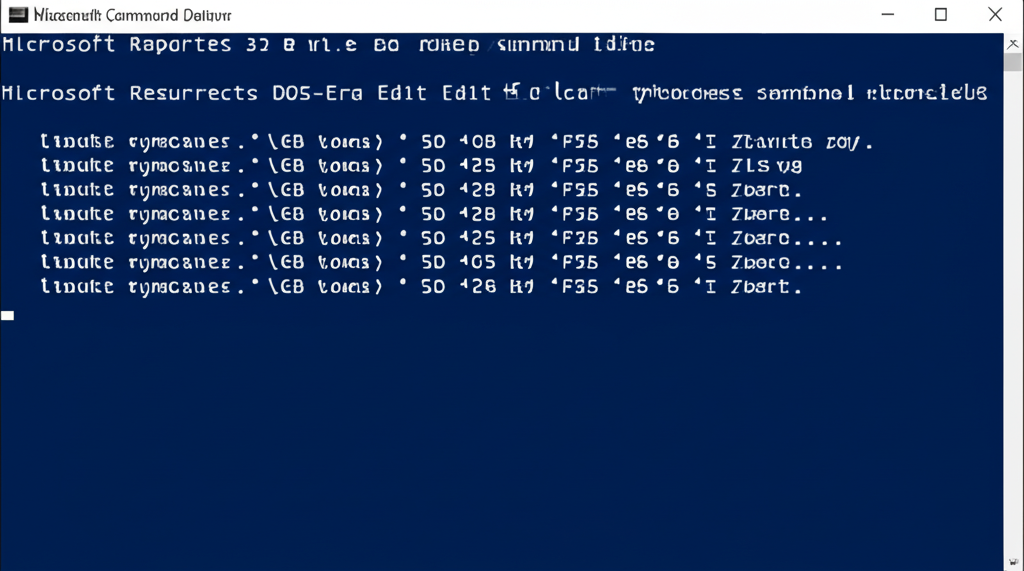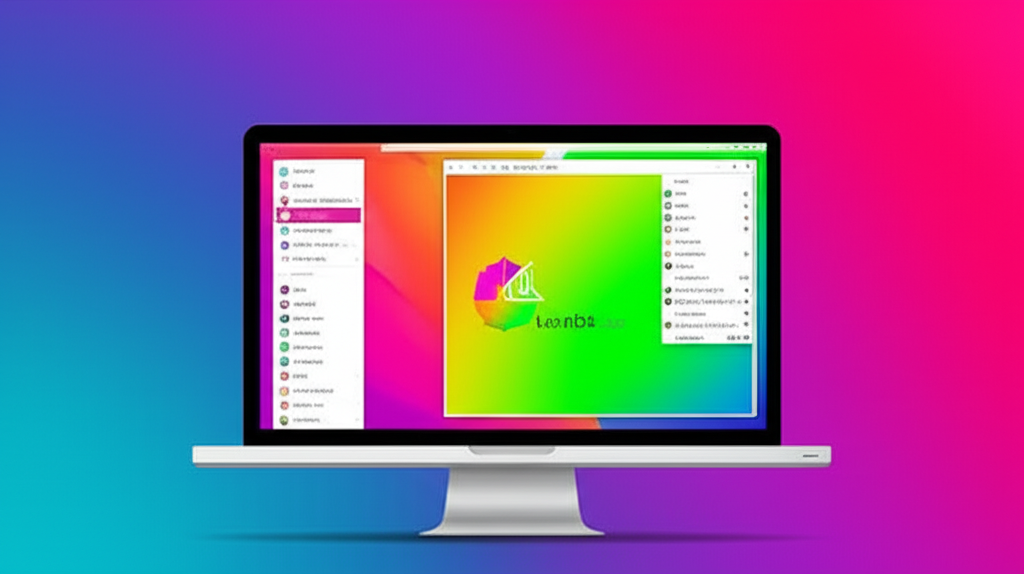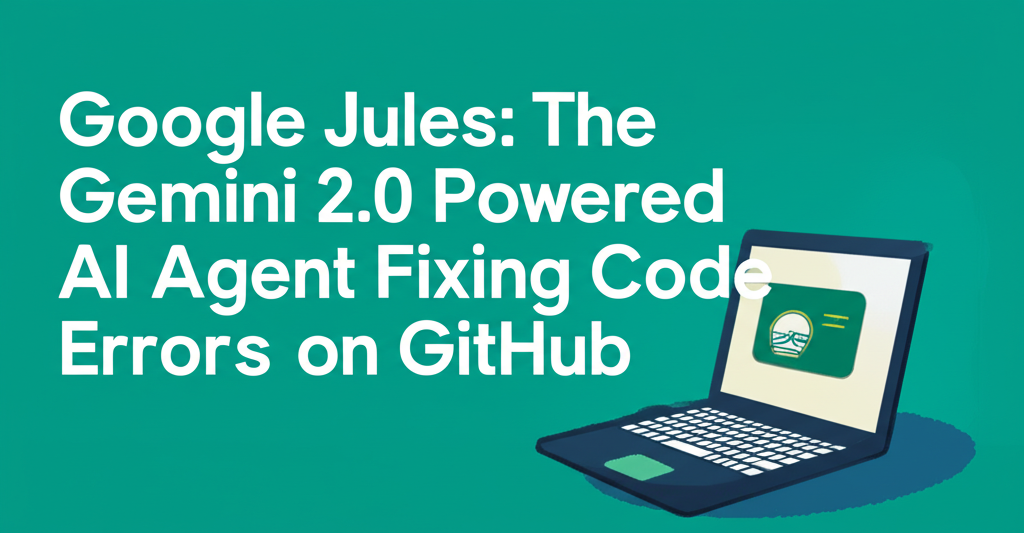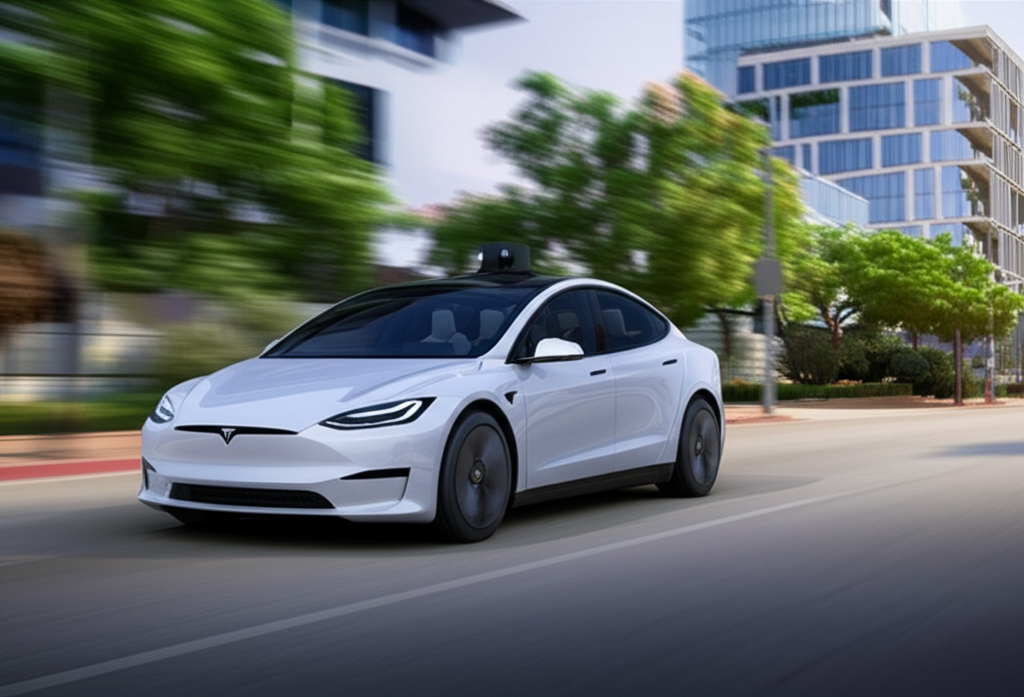Desktop GPUs Unleash Generative AI: A New Era of Local Computing
The landscape of artificial intelligence is undergoing a profound transformation, moving beyond the confines of massive cloud data centers and into the realm of personal computing. At the recent Computex trade show in Taipei, a clear message emerged from the titans of the chip industry: the desktop is becoming a powerful hub for generative AI. Major GPU manufacturers — Nvidia, Intel, and AMD — showcased their latest hardware designed not just for graphics and gaming, but specifically engineered to handle the demanding workloads of modern AI models right on your desk.
This shift is driven by a confluence of factors, including advancements in GPU architecture, the increasing efficiency of AI models, and a growing desire among developers and businesses to perform AI tasks locally for reasons spanning privacy, latency, and cost. The announcements at Computex signal a new era where powerful generative AI capabilities, once exclusive to the cloud, are becoming accessible on high-end desktop workstations and even consumer-grade PCs.

Nvidia's Vision: The Personal AI Cloud
Nvidia, a dominant force in the AI hardware space, made a significant splash with the formal announcement of its DGX Spark desktop system. Formerly known as Project DIGITS, this compact box is designed to bring AI supercomputing power directly to the user's workspace. Set to ship in July from leading PC manufacturers like Dell, HP, Acer, Asus, and Lenovo, the DGX Spark is not a traditional consumer GPU but a dedicated AI appliance.
Equipped with Nvidia’s cutting-edge Blackwell GPU architecture, the DGX Spark boasts an impressive 1 petaflops of performance. This level of computational power is typically associated with large-scale data center deployments, making its availability in a desktop form factor a notable development. Nvidia CEO Jensen Huang highlighted the system's convenience and accessibility during his Computex keynote, describing it as “your own AI cloud sitting right next to you, and it’s always on, always waiting for you.”
The DGX Spark is exclusively targeted at AI workloads, distinguishing it from traditional GPUs that balance graphics rendering with computational tasks. Its design reflects Nvidia's strategy to cater to professional AI developers and researchers who require dedicated, high-performance local hardware for model training, fine-tuning, and inference without relying on shared cloud resources. This 'personal AI cloud' concept resonates with the increasing demand for immediate access and control over sensitive data and proprietary models.
AMD and Intel Enter the Desktop AI Arena
While Nvidia's Spark is a specialized AI system, Intel and AMD are integrating significant AI capabilities into their more traditional desktop GPUs, targeting both graphics and AI workloads. This approach aims to bring AI acceleration to a broader range of users, from content creators and engineers to researchers and data scientists using workstations.
AMD's Radeon 9700 AI Pro: Powering Large Models Locally
AMD unveiled its Radeon 9700 AI Pro GPU, featuring 128 dedicated AI accelerators. This hardware is specifically designed to handle the matrix multiplications and parallel processing essential for efficient AI computation. A key highlight of the Radeon 9700 AI Pro is its ability to run substantial generative AI models locally.
According to AMD, a single Radeon 9700 AI Pro can handle a DeepSeek R1 reasoning model with up to 32 billion parameters. For even larger models, configurations with multiple GPUs are possible. Desktops equipped with four Radeon 9700 GPUs can reportedly run Mistral’s Large Instruct model, which boasts a massive 123 billion parameters. This demonstrates AMD's commitment to enabling high-parameter model inference on desktop hardware. The Radeon 9700 AI Pro is slated for availability in July, positioning it as a direct competitor in the emerging desktop AI market.
Intel's Arc Pro B50: Accessible AI for Workstations
Intel also showcased its entry into the desktop AI GPU space with the Arc Pro B50. Priced at a more budget-friendly $299 and primarily aimed at the workstation market, the Arc Pro B50 balances graphics performance with AI capabilities. It includes 128 specialized AI engines, indicating Intel's strategy to embed AI acceleration across its GPU lineup.
While not as powerful as AMD's offering for the largest models, the Arc Pro B50 is capable of running the DeepSeek R1 model with up to 14 billion parameters. Intel's specifications indicate that the GPU's 16GB of memory is the limiting factor for running models with 32 billion or more parameters, contrasting with the Radeon 9700 AI Pro's larger memory capacity. The Arc Pro B50 also stands out for its power efficiency, drawing only 70 watts compared to the Radeon 9700 AI Pro's 300 watts. This makes it a viable option for a wider range of workstation form factors and power envelopes.
The Strategic Shift: From Cloud to Desktop
Industry analysts view these developments as a significant strategic shift. Jack Gold, principal analyst at J. Gold Associates, notes that AI development is increasingly moving towards personal computing resources and away from expensive, time-shared cloud infrastructure. “They may still run the output in the cloud at production, but increasingly development is moving towards PCs, especially as we see AI-powered development tools being used to develop AI programs,” Gold commented.
This trend is fueled by several factors:
- **Cost Efficiency:** Running AI workloads locally can be more cost-effective for development and inference compared to continuous cloud usage, especially for iterative tasks.
- **Privacy and Security:** Sensitive data or proprietary models can be processed on-premises without being sent to external cloud servers, addressing critical privacy and security concerns for businesses.
- **Lower Latency:** Local processing eliminates network delays, resulting in faster response times for interactive AI applications.
- **Accessibility:** Dedicated desktop hardware provides consistent, on-demand access to AI resources without queuing or competing with other users on a shared cloud platform.
Chip makers also see AI-capable workstations and high-end PCs as a major growth area. While discrete GPUs have a strong market in gaming and traditional graphics, the potential market for 'AI PCs' — systems designed with AI acceleration in mind — is perceived as much larger. Gold suggests this represents a “good expansion for the PC market suppliers,” opening up new avenues for high-value hardware sales.
AI PCs vs. AI Workstations: A Nuance
It's important to distinguish between the emerging category of 'AI PCs,' such as Windows-based Copilot+ PCs equipped with Neural Processing Units (NPUs), and the high-end AI workstations discussed at Computex. While AI PCs with NPUs are primarily designed for AI *consumption* — accelerating specific, often lightweight AI tasks integrated into applications (like background blur, transcription, or basic copilots) — AI workstations with powerful GPUs are built for AI *development* and *heavy inference*. These systems are intended for users who need to train models, run complex simulations, or perform inference on very large models locally.
Anshel Sag, principal analyst at Moor Strategy and Insights, points out that AI is becoming a significant secondary workload in workstations, particularly those equipped with powerful GPUs like Nvidia's. “Many companies don’t necessarily want to send their workloads to the cloud. But also, they don’t want to build supercomputers to run models for inference,” Sag explained. Desktop AI workstations offer a middle ground, providing substantial local processing power without the complexity and cost of a full-scale data center or supercomputer.
The Role of Leaner Models: DeepSeek R1 as a Catalyst
The feasibility of running powerful generative AI models on desktop hardware is not solely due to hardware advancements. Significant progress has been made in developing leaner, more efficient AI models that require less computational power and memory. Sag highlights that GenAI models are becoming more optimized for local execution, making it possible to run complex reasoning models efficiently on workstations. He specifically cited DeepSeek R1 as a key driver of this trend.
DeepSeek R1, developed by the Chinese company DeepSeek, has gained considerable traction and adoption within the global AI community, including by US AI companies and cloud providers. Its architecture and optimizations have demonstrated that powerful reasoning capabilities can be achieved with models that are more manageable in size than some of the largest, early-generation models.
Nvidia CEO Jensen Huang himself acknowledged the transformative impact of DeepSeek R1 during his Computex keynote. “DeepSeek R1 is genuinely a gift to the world’s AI industry… R1 has made a real impact in how people think about AI, how to think about inference and how to think about reasoning,” Huang stated. This endorsement from a leading figure in the AI hardware space underscores the importance of model efficiency in enabling the shift towards local AI processing.
Technical Considerations for Desktop AI
Bringing large AI models to the desktop involves several technical considerations:
- **AI Accelerators:** Modern GPUs designed for AI include specialized cores (like Nvidia's Tensor Cores or AMD's AI Accelerators) optimized for the matrix operations fundamental to neural networks. The number and capability of these cores directly impact AI performance.
- **Memory (VRAM):** The size of the AI model and the complexity of the task dictate the amount of GPU memory (VRAM) required. Running larger models or processing larger datasets locally necessitates GPUs with substantial VRAM. The contrast between AMD's 32GB on the Radeon 9700 AI Pro and Intel's 16GB on the Arc Pro B50 illustrates how memory capacity impacts the size of models that can be handled.
- **Computational Power:** Measured in FLOPS (Floating Point Operations Per Second), or more specifically AI-relevant metrics like TOPS (Tera Operations Per Second) or petaflops (PFLOPS), this indicates the raw processing capability for AI tasks. Nvidia's 1 PFLOPS Spark system represents the high end of desktop AI power.
- **Power Consumption and Cooling:** High-performance GPUs consume significant power and generate heat. Designing desktop systems capable of adequately cooling these components is crucial for sustained performance and system stability. The power draw difference between the AMD (300W) and Intel (70W) GPUs highlights varying approaches to performance and efficiency.
- **Software Ecosystem:** The availability of optimized software libraries, frameworks (like TensorFlow, PyTorch), and tools is essential for developers to effectively utilize the AI capabilities of desktop GPUs. Chip manufacturers invest heavily in software stacks to make their hardware accessible and performant for AI workloads.
Use Cases for Local Desktop AI
The ability to run powerful generative AI models locally opens up a wide range of potential use cases:
- **AI Model Development and Fine-tuning:** Developers can iterate faster on model design and fine-tune pre-trained models on custom datasets without incurring cloud costs for every experiment.
- **High-Performance Inference:** Running inference locally provides instant results for applications requiring real-time AI processing, such as complex image or video analysis, natural language processing, or interactive AI assistants.
- **Content Creation:** Artists, designers, and media professionals can use generative AI tools for tasks like image generation, video editing assistance, or 3D model creation directly on their workstations, leveraging local power for faster workflows.
- **Scientific Computing and Research:** Researchers can run simulations, analyze large datasets, and develop custom AI models for scientific applications without relying on shared high-performance computing clusters.
- **Data Analysis and Business Intelligence:** Businesses can process sensitive internal data with AI models locally, ensuring data privacy and compliance while gaining insights.
- **Personalized AI Applications:** Users can run personalized AI models trained on their own data, enabling highly customized experiences for tasks like smart assistants, content filtering, or predictive maintenance.
The shift towards local AI processing on desktops complements, rather than entirely replaces, cloud-based AI. The cloud will likely remain essential for large-scale training of foundational models and deploying AI services at massive scale. However, for development, fine-tuning, and many inference tasks, the desktop is becoming an increasingly viable and attractive platform.
The Competitive Landscape and Future Outlook
The announcements from Nvidia, Intel, and AMD at Computex underscore the intensifying competition in the AI hardware market. While Nvidia currently holds a dominant position, particularly in high-end training hardware, Intel and AMD are aggressively pursuing opportunities in the desktop and workstation segments by integrating AI acceleration into their GPU lineups. This competition is expected to drive innovation, improve performance, and potentially lower costs for desktop AI hardware over time.
The trend towards leaner, more efficient AI models is also crucial. As models become better optimized for deployment on less powerful hardware, the barrier to entry for local AI processing decreases, potentially expanding the market beyond high-end workstations to more mainstream PCs. The continued development of models like DeepSeek R1 will be key to this expansion.
The future of computing appears to be increasingly hybrid, with AI workloads distributed across cloud data centers, edge devices, and powerful personal computers. The new generation of desktop GPUs from Nvidia, Intel, and AMD is a critical enabler of this hybrid future, bringing sophisticated generative AI capabilities directly to the user's fingertips. This not only empowers developers and professionals but also paves the way for a new generation of AI-powered desktop applications that were previously impractical.
As hardware capabilities continue to advance and AI models become more efficient, we can anticipate even more powerful and accessible AI experiences on the desktop. This shift promises greater control, enhanced privacy, and faster workflows for a growing number of users, fundamentally changing how we interact with and leverage artificial intelligence in our daily work and creative pursuits.
The announcements at Computex are more than just new product launches; they represent a pivotal moment in the democratization of AI, signaling that the age of powerful, local generative AI on the desktop has truly arrived.



















